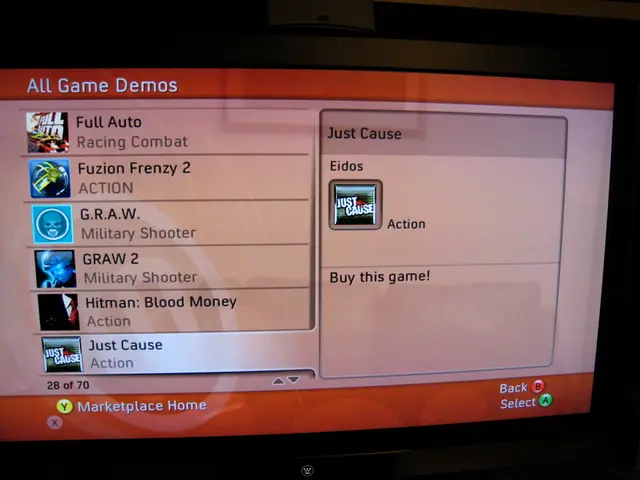Best Tool for Political Campaign Data Visualization: Why Tableau Tops the List
In the dynamic world of political campaigns, having a powerful tool to manage and analyse data is crucial. Tableau, a leading data visualization software, offers several key benefits that set it apart from other tools.
Benefits of Using Tableau for Political Data Visualization
- Ease of Use and Accessibility: Tableau's user-friendly interface makes it accessible to a wide range of users, from analysts to non-technical stakeholders. This ease of use allows political data to be visualized and shared effectively across different levels of government and public interest groups.
- Data Integration and Analysis: Tableau supports a wide range of data sources, including Excel, PDFs, Python, and more, allowing for comprehensive data integration and analysis. This is particularly useful in politics where data comes from diverse sources such as voter registration databases, election results, and policy impact assessments.
- Interactive Dashboards: Tableau enables the creation of interactive and dynamic dashboards that can be used to explore complex political data sets in real-time. This interactivity is crucial for analyzing trends, such as voter turnout or policy effectiveness, allowing policymakers to make informed decisions.
- Visual Storytelling: Effective political data visualization often requires telling a story with data. Tableau provides a variety of visualization tools that can help create compelling narratives around data trends and patterns. This storytelling capability is essential for engaging audiences and communicating policy impacts effectively.
- Collaboration and Sharing: Tableau supports robust collaboration features, allowing users to share dashboards and insights easily with colleagues or stakeholders. In politics, this is vital for ensuring that data-driven decisions are well-informed and broadly supported.
Comparison with Other Tools
While other tools like Microsoft Power BI, Google Data Studio, and TIBCO Spotfire have their merits, Tableau stands out for its ease of use, data integration, and interactive visualization capabilities.
- Microsoft Power BI: Power BI is more integrated with Microsoft products and may require more technical expertise than Tableau for some customizations. It excels in real-time data analysis but can be more restrictive in terms of data source compatibility compared to Tableau.
- Google Data Studio: Free and web-based, Data Studio is ideal for simple, interactive dashboards and integrates well with Google services. However, it may lack the depth of analytics and customization options available in Tableau.
- TIBCO Spotfire: Offers advanced analytics capabilities and is suitable for complex data sets. However, it may require more IT support compared to Tableau, which can be more user-friendly for non-technical users.
Empowering Political Campaigns with Tableau
With Tableau, political campaigns can monitor changes in voter interaction across events, social media, and campaign activities, highlighting trends in engagement. It offers role-based permissions, encrypted connections, and secure data storage options to protect sensitive campaign information.
Tableau can analyse demographic data, voter registration records, fundraising information, social media analytics, polling results, and volunteer activity data. It tracks donor contributions, identifies high-value donor segments, and evaluates the effectiveness of fundraising campaigns over time.
Future trends in Tableau use for political campaigns include AI-assisted data analysis, predictive modeling integrations, real-time voter sentiment tracking, and mobile-optimized dashboards. Tableau helps campaigns identify key target segments and optimize outreach by analysing past voter behaviour, demographics, and geographic trends. It can also visualise survey results, segment responses by demographics, and identify shifts in voter opinion over time.
Tableau helps campaigns share progress and performance with stakeholders transparently by presenting data in clear, accessible visualizations. However, advanced data modeling and dashboard customization may require additional training for campaign teams.
For more information, please contact us at +91 91 9848321284.
- Political campaigns can use Tableau to target voters effectively by analyzing demographic data, voter registration records, fundraising information, social media analytics, polling results, and volunteer activity data.
- Tableau offers robust security features, such as role-based permissions, encrypted connections, and secure data storage options, to protect sensitive campaign information.
- In the dynamic world of political campaigns, having a tool like Tableau for managing and analyzing data is vital, as it can help identify key target segments and optimize outreach by analyzing past voter behavior, demographics, and geographic trends.
- For political data visualization, Tableau stands out for its ease of use, data integration capabilities, and interactive visualization tools, making it an ideal choice for policymakers and stakeholders looking to make informed decisions.
- With real-time voter sentiment tracking, AI-assisted data analysis, predictive modeling integrations, and mobile-optimized dashboards, Tableau offers future trends to political campaigns for making the most of their resources and staying ahead in the game of politics.




